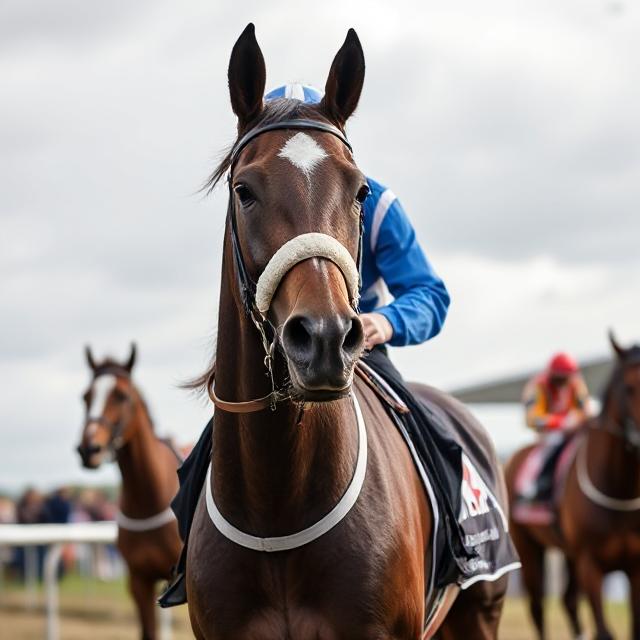Introduction to Horse Racing Outfits
Horse racing Outfits is not only a thrilling sport that captivates millions worldwide but also a glamorous social event characterized by its distinctive fashion. From the iconic silks worn by jockeys to the stylish attire of racegoers, horse racing outfits embody a rich tradition rooted in history, culture, and elegance. In this article, we explore the significance of horse racing outfits, their evolution over time, and the key elements that define the sartorial landscape of this prestigious sport.
The Tradition Behind Horse Racing Attire
The history of horse racing outfits is deeply intertwined with the sport’s origins. In the early days, jockeys wore practical clothing designed for safety and comfort—silks made from lightweight fabrics, protective helmets, and riding boots. These functional garments have since evolved into more colorful and recognizable uniforms known as “silks,” which serve a critical role in identifying riders and stables during races.
Meanwhile, racegoers and spectators developed their own fashion standards, often reflecting social status and regional customs. Over the centuries, the attire became more sophisticated, with a focus on elegance and style, turning racecourses into venues of high fashion and social networking.
The Iconic Jockey Silks
Perhaps the most recognizable aspect of horse racing outfits is the jockey silks. These are brightly colored, uniquely patterned garments representing the owner or stable of the horse. Silks are meticulously registered and registered with racing authorities to prevent duplication, ensuring that each owner’s colors are distinct.
The design of silks ranges from simple solid colors to intricate patterns such as checks, stripes, and motifs. The choice of colors and designs often carries personal or cultural significance, sometimes reflecting regional heritage or personal symbolism. Jockeys wear these silks over their protective gear, including helmets and vests, creating a striking visual contrast on the racecourse.
Modern Race Day Fashion for Spectators
While jockey silks serve a functional purpose, the fashion for racegoers has become a major aspect of the sport’s allure. Major racing events like the Kentucky Derby, Royal Ascot, and Melbourne Cup are renowned for their fashion scenes, attracting attendees dressed in glamorous, often daring, outfits designed to impress.
Hats and Fascinators: One of the most distinctive features of horse racing fashion is the elaborate headwear. Fascinators—small, decorative hats with feathers, flowers, and veils—are a staple for women, adding a touch of elegance and whimsy. Wide-brimmed hats are also popular, often coordinated with the overall outfit to create a sophisticated look.
Dresses and Suits: Racegoers often opt for stylish dresses, ranging from classic cocktail styles to more daring ensembles with bold patterns and vibrant colors. Men typically wear tailored suits, often complemented by ties or bowties, with some opting for more casual but still refined attire such as chinos and blazers.
Accessories and Footwear: Accessories like clutch bags, jewelry, and sunglasses complete the look. Footwear is chosen both for style and comfort, with women favoring heels or wedges and men opting for polished dress shoes.
Dress Codes and Etiquette
Different racing events have varying dress codes, and understanding these is essential for participants and spectators alike. For example, Royal Ascot in the UK enforces a strict dress code that requires women to wear dresses or skirts with a hemline below the knee, along with hats or fascinators, and men to wear morning suits or jackets with ties.
In contrast, some racing venues adopt a more casual dress code but still emphasize smart, elegant attire. Adherence to dress codes is part of the tradition, maintaining the sport’s distinguished reputation and enhancing the social experience.
The Evolution of Horse Racing Outfits
Over the decades, horse racing fashion has evolved from conservative, subdued attire to a vibrant display of individuality and creativity. The influence of fashion designers and the media has propelled race day dressing into a spectacle of style. Fashion trends such as floral headpieces, pastel hues, and statement accessories are now commonplace.
The rise of social media has further amplified the importance of race outfits, with attendees showcasing their looks online and competing for recognition and admiration. Some racecourses even host fashion competitions, celebrating the most stylish outfits of the day.
The Role of Sustainability
In recent years, there has been a growing awareness of sustainability within the fashion industry, and horse racing outfits are no exception. Many fashion-conscious racegoers now opt for eco-friendly fabrics, vintage clothing, or sustainable accessories to reduce their environmental impact. Some designers are creating racewear collections that combine style with ethical considerations, reflecting a shift towards more responsible fashion choices.
Conclusion
Horse racing outfits are more than just clothing—they are an integral part of the sport’s heritage, culture, and social fabric. From the functional silks of jockeys to the glamorous attire of racegoers, fashion plays a vital role in shaping the racing experience. As traditions evolve and fashion trends advance, the outfits worn at horse racing events continue to symbolize elegance, individuality, and the storied history of this majestic sport.
Whether you’re a participant, a casual spectator, or a fashion enthusiast, understanding the significance of horse racing outfits enriches the appreciation of this timeless sport and its vibrant social scene.



